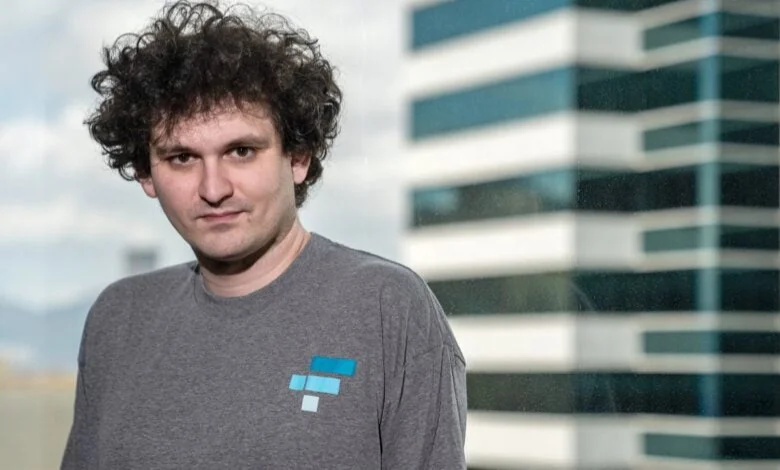- FTX rode the cryptocurrency mania to a billion dollars in sales last year.
- Profitable and experiencing rapid global expansion, FTX saw explosive growth.
- However, when retail trading volumes plummeted, it reported $808.3 million in revenue in Q2 of this year.
According to internal records seen by CNBC, FTX rode the cryptocurrency mania to a billion dollars in sales last year while growing its global footprint through a flurry of acquisitions.
The audited financials provide a unique window into the startup’s finances that is privately held. Profitable and experiencing rapid global expansion, FTX saw explosive growth.
Revenue for the privately held crypto exchange increased by more than one billion percent in 2021, from $89 million to $1.02 billion. Like many startups, its profitability relies on how you define it. Operating income increased from $14 million to $272 million in the past year. Last year, FTX increased its net profits from $17 million to $388 million.
Regarding the stolen financial documents, FTX declined to comment.
According to an investor presentation published with CNBC, the company generated $270 million in revenue in the first quarter of 2022 and was on target to generate about $1.1 billion in revenue in the entire year. However, given the recent so-called “Crypto Winter,” when cryptocurrency prices fell sharply, it’s unknown how FTX fared in the second quarter.
In contrast, publicly traded Coinbase, which generated $7.4 billion in sales and $3.6 billion in net income last year, also witnessed a cash boom during the bull market for cryptocurrencies. However, when retail trading volumes plummeted, it reported $808.3 million in revenue in Q2 of this year, a decrease of 64% from the corresponding quarter last year, and a surprising net loss of $1.1 billion, as opposed to $1.59 billion in net profits.
Sam Bankman-Fried, a former quant trader on Wall Street, created FTX three years ago. The 30-year-old CEO recently assumed the role of lender of last resort for the sector, trying to support businesses when funding dried up. Additionally to other loans totaling hundreds of millions of dollars,
The businesses owned by Bankman-Fried also attempted to buy distressed assets. FTX inked a contract in July giving it the option to purchase the lender BlockFi, and it was also in talks to buy the South Korean company Bithumb. In August, FTX made an offer to purchase Voyager but was rejected due to what the business called a “lowball bid.
The documents state that FTX had around $2.5 billion in cash at the end of the previous year with 27% profit margins. If advertising and “associated party” costs are taken out, margins were closer to 50%. It previously raised capital in January, receiving $400 million at a $32 billion valuation from investors including SoftBank’s Vision Fund 2 and Tiger Global.
Global impact
When FTX was established, Coinbase and Binance had already established themselves as the two biggest trading platforms in the world. Still mostly based in the United States, Coinbase operates. With its roots in China, Binance, the largest exchange by trading volume, subsequently relocated its corporate headquarters to the Cayman Islands. With an American affiliate, Binance is now making a push for the American market.
To compete, FTX has been covertly establishing its own network of international companies.
Bankman-home Fried’s country of the Bahamas is the location of FTX Derivatives Markets, which is headquartered in Antigua. With the recent acquisitions of Digital Assets DA AG from Switzerland, IFS Group, and Hive from Australia, FTX Trading now owns 15 smaller businesses worldwide.
According to the documents, it has portfolio firms in, among other places, Cyprus, Germany, Gibraltar, Singapore, Turkey, and the United Arab Emirates. In order to quickly obtain the necessary regulatory licences to open shop in a new nation, cryptocurrency companies frequently buy start-ups.
According to the records, Bankman-Fried also established the trading company Alameda Research, which is responsible for around 6% of FTX’s exchange volumes.
Technically, West Realm Shires Inc. is the parent corporation of FTX’s U.S. operations. Less than 5% of FTX’s overall revenue was generated by FTX U.S. as of 2021. However, the business is making an effort to grow in this region with a number of well-known advertisements and sponsorships.
According to the records, FTX spent about 15% of its revenue on advertising and marketing in 2021. This may be the reason behind the company’s 2022 Super Bowl commercial starring actor Larry David and high-profile celebrity endorsements from Gisele Bündchen and Tom Brady, who are both stockholders in the business. The naming rights to Miami’s NBA facility, originally known as the American Airlines Arena, were also purchased by FTX. According to the records, FTX anticipated spending $900 million on advertising over the following years.
Additionally, the cryptocurrency exchange is introducing stock trading. It began stock trading a few weeks after Bankman-Fried acquired a 7.6% passive holding in Robinhood, igniting rumors that FTX is attempting to acquire the trading app in a bid to gain control of American retail accounts. Bankman-Fried and Robinhood have
FTX has undoubtedly increased the pace of its retail growth activities. However, the records demonstrate that it continues to be primarily a forum for more experienced traders using derivatives, such as futures or options. Approximately 16% of revenue came from so-called spot trading, while 67% came from commissions on futures trading. Trades in futures and derivatives are typically more profitable for exchanges.


